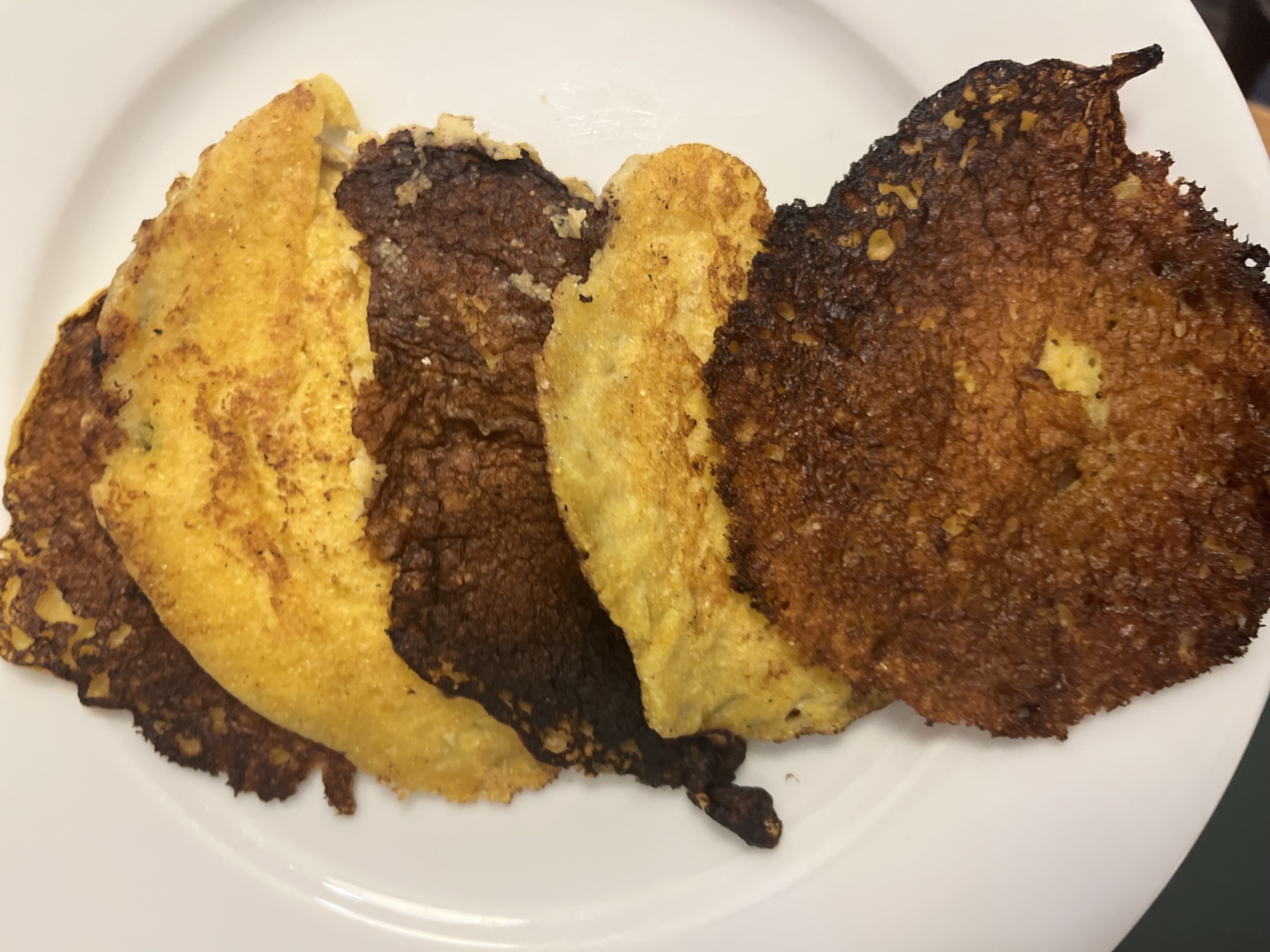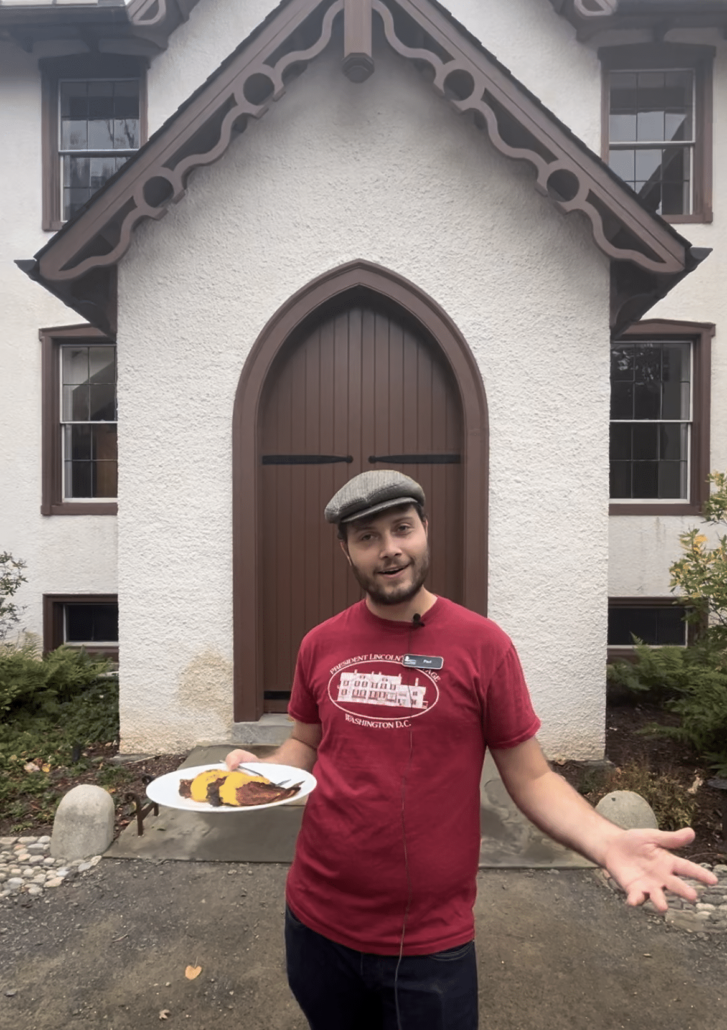
By Paul Sullivan
BACKGROUND ON LINCOLN & THE HISTORY OF THANKSGIVING
In the autumn of 1863, while living in his Cottage at the Soldiers’ Home, President Abraham Lincoln received a letter from one Sarah Joseph Hale — a novelist and anti-slavery activist from New England who was then the editor of the “Godey’s Lady’s Book,” a well-known women’s magazine. Mrs. Hale had written to President Lincoln, not about slavery, but the upcoming Thanksgiving holiday.
At the time, many Americans celebrated Thanksgiving, but the actual date of the holiday tended to be rather slapdash. This led to a movement to establish a Thanksgiving as a national holiday, to be celebrated annually on the same day by the whole of the nation.
It was, evidently, something of a pet-issue for Mrs. Hale; she had been writing about it for the past fifteen years and had written to several powerful officials — including Secretary of State William Seward — to enlist them to her cause. In her letter to Mr. Lincoln, Hale made her case: “Now, the purpose of this letter is to entreat President Lincoln to put forth his Proclamation, appointing the last Thursday in November. . . as the National Thanksgiving for all those classes of people who are under the National Government, and commending this Union Thanksgiving to each State Executive . . . [thus] the permanency and unity of our Great American Festival of Thanksgiving would be forever secured.”
The phrasing “Union Thanksgiving” was laden with meaning for Lincoln. Even as the ever-growing Civil War took its toll on both the nation and the President, he had repeatedly expressed his resolve that the sacred Union would endure. By finally making Thanksgiving a national holiday, Lincoln could make a powerful statement: that even amidst the toil of war, the Union was closely bound together. And that was something to be truly thankful for. One can almost imagine him sitting in a chair at the Soldier’s Home, holding Mrs. Hale’s letter in hand as he mulled over her proposal.
On October 3rd, 1863, Lincoln responded with a public proclamation. After reflection on the blessings of the year, he invited his “fellow citizens in every part of the United States, to set apart and observe the last Thursday of November next, as a day of Thanksgiving and Praise.” With those words, Lincoln created Thanksgiving as we know it today.
And so, to honor Lincoln’s contribution to this Great American Festival, we are bringing a historic recipe to your Thanksgiving table!
KNOB CREEK CORN CAKES: A RECIPE
- 2 cups cornmeal
- 1 teaspoon salt
- 1 teaspoon baking soda
- 1 egg, lightly beaten
- 3 cups buttermilk
- Vegetable Oil
- Maple Syrup and/or Butter (for serving)
We start by mixing together the cornmeal, salt, and baking soda. Use a sifter if you have one, but if you don’t, just mix them very well with a whisk. Once that’s done, add in your egg and your buttermilk. Mix them together by hand. The resulting batter will probably be a bit thinner than you expect — don’t worry, that’s normal!
Next, you need to heat your cooking surface to medium or medium-high. You can use a pancake griddle if you have one. However, if Sarah Bush Johnston was anything like me, I’m betting she loved her cast-iron skillet, so that’s what I chose to use for my recipe!
While your skillet is warming, pre-heat your oven to 250˚, and add some of that vegetable oil to the skillet. Be warned, these things don’t flip easy, so make sure your pan is well-coated.
Once your skillet is well heated, use a large spoon or ladle to transfer some of the batter to the pan. You can make these however large or small you’d like, but I found that I got best results with cakes that were three to four inches wide.
Cook the cakes undisturbed until they’re cooked almost all the way through (about two minutes). Then, carefully flip the cakes (they can come apart quite easily!), and cook them about a minute more, and transfer them to the cookie sheet. This is probably the point where young Abraham would have swooped in to grab himself some piping-hot corncakes, but you can just put the cookie sheet in the oven. Repeat until you’ve used up all the batter, adding more oil to the skillet as needed.
Once the corncakes are done, feel free to serve them out to your guests, tipping them generously with butter and maple syrup, and enjoy!
KNOB CREEK CORN CAKES: A HISTORY
For the origins of this dish, we must turn back to Abraham Lincoln’s own childhood in rural Kentucky, where corn cakes would have been a delicious, high calorie treat — essential for a hard-working, growing boy like Abe. And growing he was — by the age of seven, he was described as a “tall spider of a boy,” and by age 17, he had reached his full height of six foot four. Given this early growth spurt (and the backbreaking work he often found himself doing on his father’s farm), it’s no surprise that Lincoln developed love of nutritious, wholesome corncakes (along with his well-known sweet tooth!). In fact, the future President told one of his cousins, he could “eat corn cakes twice as fast as two women could make them!” If this is the case, then the women in question (likely his stepmother, Sarah Johnston, and his sister, Sarah Lincoln), are two women well-deserving of our sympathy.
Cornmeal was a staple of life on the American frontier. Corn, or maize, had been cultivated by Native tribes for millennia before European settlers arrived. It was a crucial part of the diet of the Shawnee people who had inhabited Kentucky before their forcible relocation to Oklahoma by the United States Government. The Shawnee called it “lokhaana taani,” or, “flour corn.” Indigenous tribes had many uses for this grain; grits, for instance, were originally a Muscogee creation. European settlers, who often referred to as “Indian Meal” or Indian Corn,” made their own recipes as well. Since corn was cheap, nutritious, and plentiful, it quickly became a food for the poor — and in rural Kentucky, this meant sustenance farmers like the Lincolns, as well as the enslaved people who labored on nearby plantations. Often, it would be mixed with another common frontier ingredient — buttermilk.
Buttermilk, put simply, was the leftover whey from the churning of butter. Due to the lack of refrigeration techniques, this milk had often already started to go, leading to its well-known “sour” taste — and certainly failing modern FDA standards. However, the far greater danger for frontiersmen was if the cow in question had ingested snakeroot, a toxic plant found throughout the Southeast. If a cow eats snakeroot, the toxins are transferred directly to the milk — which, when ingested by humans, causes “milk sickness.” This was a uniformly fatal condition in the 19th century and is what ultimately claimed the life of Lincoln’s mother, Nancy Hanks. However, with modern dilution techniques, this is no longer a problem for modern Americans. Normally, you can find snakeroot-free buttermilk at your local grocery store — but if you’re having trouble, just mix three cups of milk with three tablespoons of white vinegar, and you’ll get buttermilk just fine.
Now a final note — you may be looking at this recipe, scratching your head, and wondering if the Lincoln family would really have had reliable access to baking soda. In point of fact, they wouldn’t have!
Baking soda did not become widely available until the 1840’s. Traditionally, yeast was the default leavening agent for all sorts of breads and cakes. But Dutch settlers to America brought with them chemical leavening techniques, using something called pearlash or potash. Potash, by the way, is more or less what it sounds like. It’s primary ingredient is woodash, filtered with running water, and then boiled to produce potassium carbonate — a natural leavening agent, just like baking soda (sodium bicarbonate). This leavening agent was effective, inexpensive, and, most importantly, could be made in a frontier Log Cabin like the one Abraham Lincoln inhabited in Knob Creek. You’re welcome to try your hand at this recipe with some real, genuine, potash, but take my advice and stick with the baking soda — sometimes, even to us history-enthusiasts, newer is better!
Now that we’ve gone through the history of the dish, let’s make some corn cakes using the above recipe!
But in the meantime, we here at the Cottage wish you all a very happy Thanksgiving!

The author with his corn cakes in front of the Cottage.
See the staff taste the corn cakes here:
BIBLIOGRAPHY:
Ava. “Pearlash, Potash, and Pancakes.” History Quester, 2024. https://www.historyquester.com/potash-pearlash-and-pancakes/.
Avery, Coral, and Priscella Redcorn. “Shawnee Flour Corn Adapting to the Impacts of Colonization and Climate Change.” The Shawnee Tribe, August 1, 2024. https://shawnee-nsn.gov/news/shawnee-flour-corn-and-climate-change/#:~:text=“Shawnee
Basler, Roy. “Thanksgiving Proclamation by Abraham Lincoln.” Abraham Lincoln Online, 2018. https://www.abrahamlincolnonline.org/lincoln/speeches/thanks.htm.
Carnegie 100 Years Project. “Did You Know. . . ?” Bucknell University, May 2024. https://www.departments.bucknell.edu/history/carnegie/lincoln/didyouknow.html.
Cleaveland, Nancy S. “Salaretus/Soda.” Pioneer Girl, Nancy S. Hale, 2000. http://www.pioneergirl.com/blog/archives/4146#:~:text=Simply
“Cornbread History.” Indiana Humanities, 2024. https://indianahumanities.org/2010/08/03/cornbread-history/.
“Cornmeal — Originated in the Americas, A Staple Ingredient Binds Many Cultures Together.” SEEfest, South East European Film Festival Los Angeles, 2024. https://seefilmla.org/cornmeal-americas-southeast-european-cultures/.
Hale, Sarah. “Sarah Hale Letter.” Library of Congress. Accessed November, 2024. https://www.loc.gov/static/classroom-materials/thanksgiving/documents/sarah_hale.pdf.
Horst, Taylor. “A Very Lincoln Thanksgiving.” President Lincoln’s Cottage, November 7, 2024. https://www.lincolncottage.org/a-very-lincoln-thanksgiving/.
Panko, Ben. “The Great Uprising: How a Powder Revolutionized Baking.” Smithsonian Magazine, 2024. https://www.smithsonianmag.com/science-nature/great-uprising-how-powder-revolutionized-baking-180963772/
Powers, Rebecca. “Cornmeal is Baked into the History of the Americas, and It’s Time to Dust Off Those Roots.” The Washington Post, March 7, 2019. https://www.washingtonpost.com/news/voraciously/wp/2019/03/07/cornmeal-is-baked-into-the-history-of-the-americas-and-its-time-to-dust-off-those-roots/.
Weintraub, Karen, and Michael Kuchta. “A Colorful History of Baking Powder (And Its Unlikely Inventor).” The MIT Press Reader, MIT. Accessed November, 2024.
